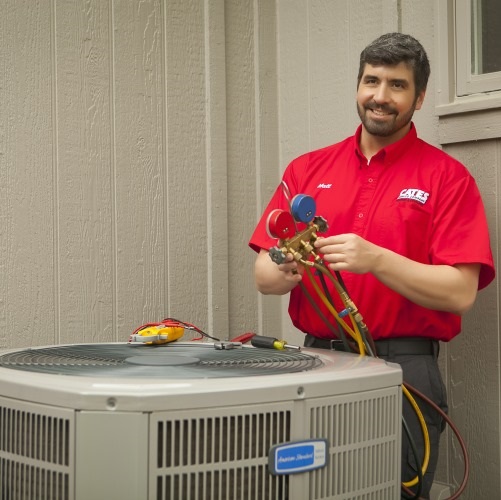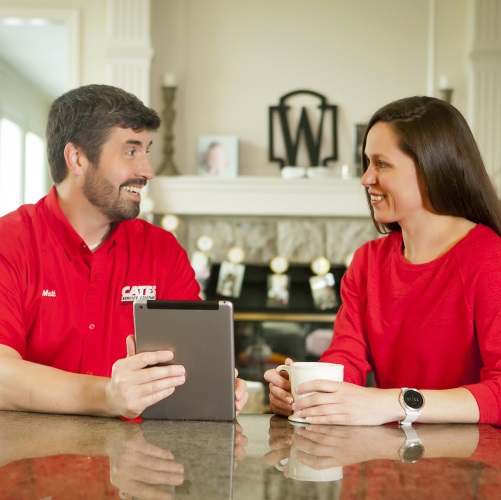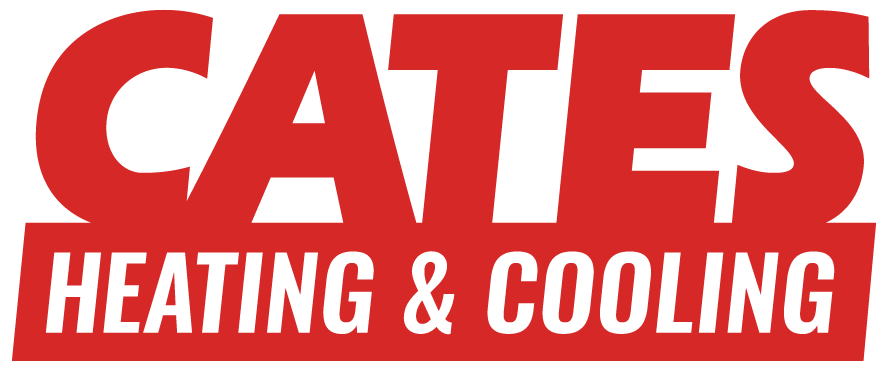Expert Technicians Servicing Any Brand
Same Day Service: Call 913-888-4470 or Request an Appointment Online
Stay Comfortable Year-Round
Check out Cates's new financing options for residential repairs and new equipment today!
Sump Pump
In this part of the country, basements are common, which means that sump pumps are found in most homes to keep your home protected from rising groundwater. At Cates Heating and Cooling, our plumbing experts want you to be as informed as possible when looking for a new sump pump.
What Are Sump Pumps?
A sump pump is a small piece of equipment either beneath or above the basement floor. It is responsible for pumping water out that collects in the sump basin and sends it back outdoors away from your home’s foundation. The goals of the sump pump are to keep your basement from flooding and prevent damage to the foundation and crawlspaces.
Plumbers usually put sump pumps in a sump pit. The water that collects under your home will run into the sump pit. The sump pump will funnel the water away through a discharge pipe, and the water is often taken to a dry well or storm drain. Sump pumps are usually not supposed to funnel into sewage systems. Older homes might still do so, so you might need an update to your system if it is still draining into the sewage system.
Types of Sump Pumps
There are two types of sump pumps for you to consider. Each type has its benefits, and you will want to discuss which option is best for your home with a professional plumber.
Submersible pumps are self-contained, and they have a waterproof seal around the motor. If your basin is large enough, you should choose a submersible pump, because then you can cover the pit with a lid. This will reduce the noise you hear from the pump, prevent debris from falling into the pit, and keep moist air from coming into your home.
Pedestal pumps sit on pedestals that keep them held above the water. They are used when there isn’t enough room in the pit to house the pump. Pedestal pumps are known for overheating when they run frequently because the cool water in the pit isn’t cooling the pump’s motor.
Pump Features
When considering a new sump pump, there are a few pump features that you might want to consider.
Switches: There are three different types of switches: tethered float, vertical float, and electronic. They all turn the pump on automatically when the water reaches a certain level within the sump pit, unless there is a problem.
- Tethered Float: An attached bulb floats up to turn on the pump, and the pump stops when the bulb drops. Since a tethered float can travel farther than a vertical float, the motor cools off longer between cycles. However, these floats need a wider sump pit than other switches.
- Vertical Float: The float rides up and down and turns the pump on and off by raising or lowering a rod attached to a switch in the motor housing. These floats often make the pump run more often than with a tethered float, and mineral buildup and debris can interfere with the float.
- Electronic: These switches start the pump when the top sensor detects water. It shuts off the pump when the bottom sensor stops detecting water. Electronic switches work best with narrower sump pits. However, sensors can be covered or blocked by minerals in the water.
Horsepower: How much horsepower you need is dependent on how much water you need the sump pump to push away from your house and how much the pump needs to lift said water to get it through your pipes. Common motor sizes are 1/4 HP, 1/3 HP, 1/2 HP, 3/4 HP, and 1 HP. A plumbing professional can help you determine the size you need for your home’s needs.
Housing: Pumps have housing that protects the motor. This housing can be either cast metal, stainless steel, or plastic.
Common Sump Pump Problems
Sump pumps have issues like other appliances in your home. Here are a few different problems that could arise with your sump pump.
- The sump pump was installed incorrectly.
- The sump pump is clogged or backed up.
- The sump pump is old or hasn’t been well maintained.
- The sump pump’s operating switch is stuck.
- The sump pump’s pipes are frozen.
Since your sump pump doesn’t run as frequently, you might not realize that there is an issue until too late. Here are a few key clues that the sump pump is failing:
- There is mud or debris around the sump pump.
- You are finding mold or mildew around your home, especially in your basement or crawlspaces.
- Your basement feels humid.
- You can hear the motor of the sump pump constantly running.
Call Cates to help you with your sump pump needs in Olathe, Overland Park, Lenexa, Kansas City, Leawood, Independence, or any other city within the Kansas City Metro Area.

See What Our Customers Have To Say!
Want to know what people have to say about Cates Heating and Cooling? Read customer testimonials, and don’t forget to tell us about your experience with Cates by leaving a review.

Finance
Don’t stress out about paying for HVAC repair and replacement services when you go with Cates Heating and Cooling. We offer a few financing options that will help you pay for your services.

Book Service
It can be hard to fit HVAC repairs into your busy schedule. Find a time that is convenient for you using our handy online calendar to book an appointment.

Worry-Free Guarantee
If 2 years from the date of installation you are not satisfied, Cates will try to quickly resolve your problem. If the solution is not to your satisfaction Cates, will remove and refund the cost of your equipment.





